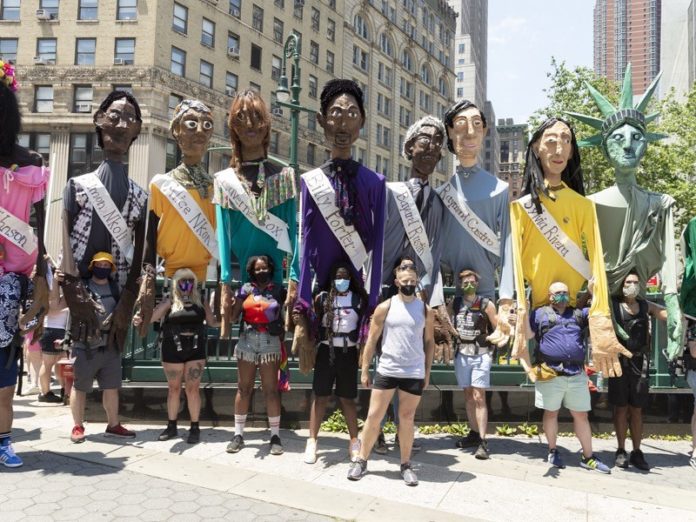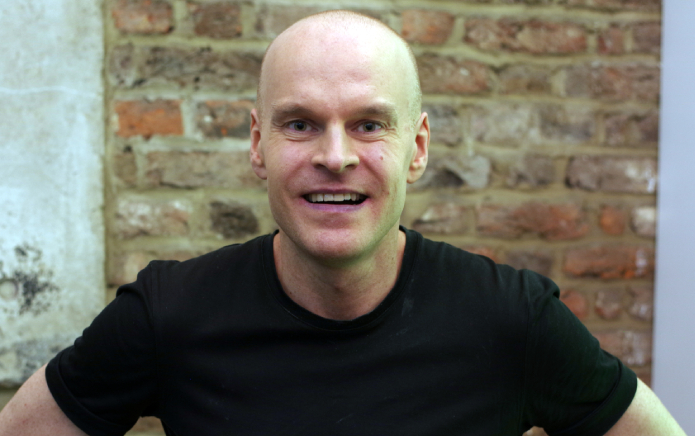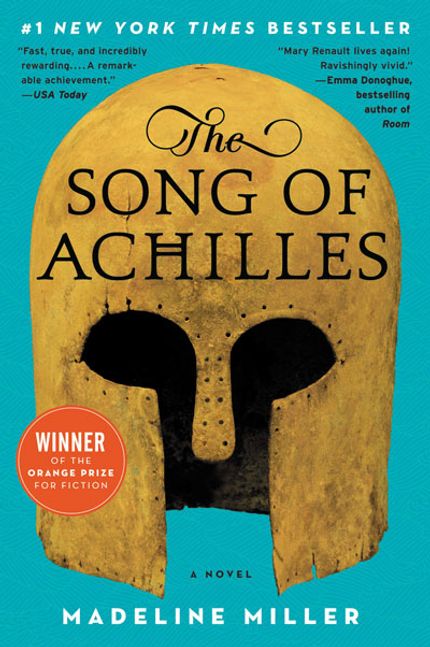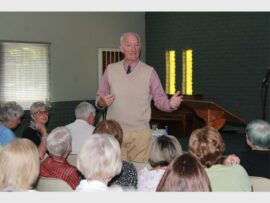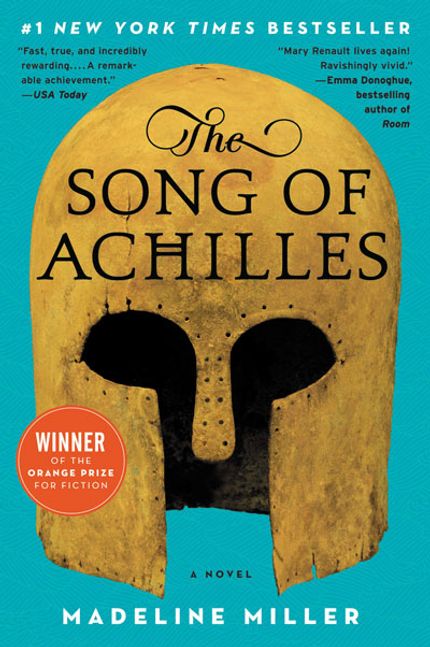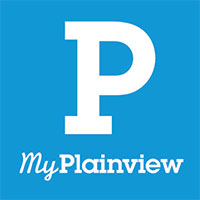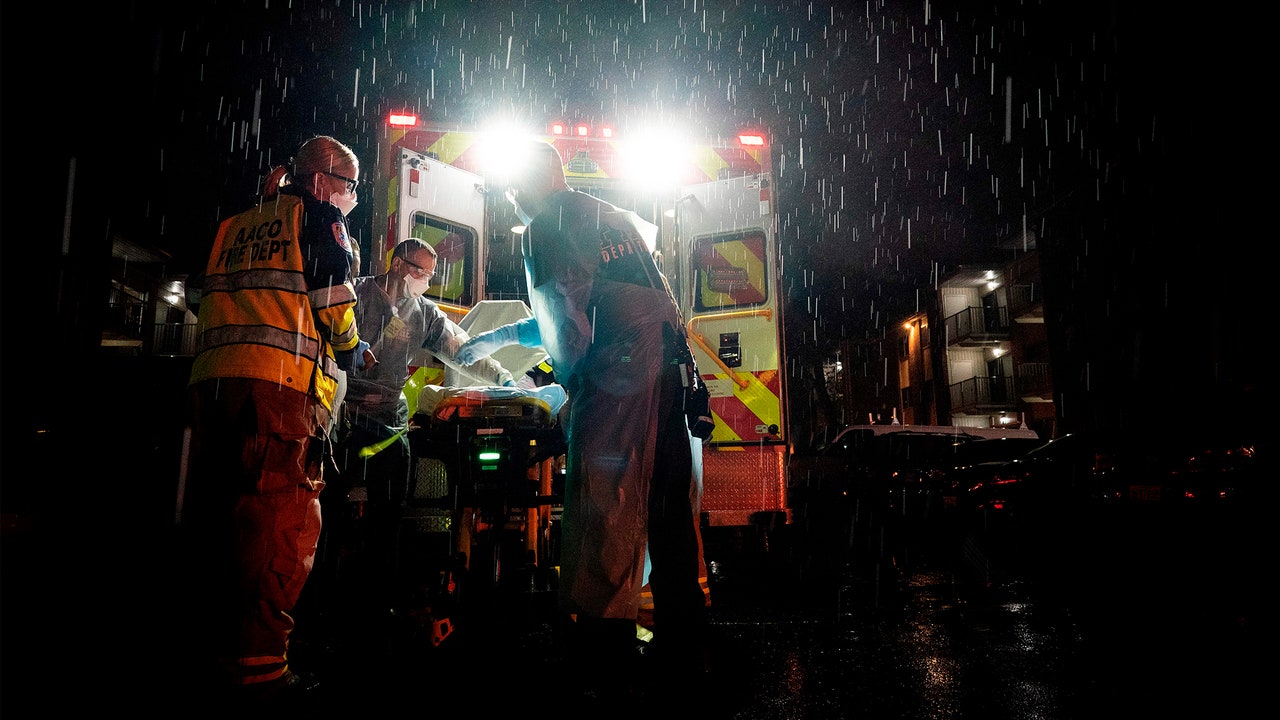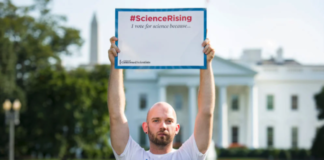‘Invisible’: that is how many scientists from sexual and gender minorities (LGBT+) describe their status at their institution, laboratory, classroom or office. Sexual orientation and sexual and gender identity are not common topics of conversation in many science, technology, engineering and mathematics (STEM) workplaces, and these scientists argue that they should be. They say that cloaking an important part of their identity at work can have dangerous consequences for mental health and career advancement, both for individual scientists and for the disciplines that could drive them away.
Surveys back up this sense of invisibility. Beliefs that being cisgender and hetero-sexual are the default or ‘normal’ modes — known as cis-heteronormative assumptions — often silence conversations about the wide spectrum of sexual and gender identities1. In a 2019 survey of more than 1,000 UK-based physical scientists, nearly 30% of LGBT+ scientists and half of transgender scientists said that they had considered leaving their workplace because of an unfriendly or hostile climate or because of discrimination2. And nearly 20% of LGBT+ chemists and 32% of transgender and non-binary scientists across all disciplines had experienced exclusionary, offensive or harassing behaviour at work in the previous year. About half of the respondents agree that there is an overall lack of awareness of LGBT+ issues in the workplace. And a 2016 study found that LGBT+ undergraduate students are 7% less likely to be retained in STEM fields than are their non-LGBT+ counterparts3.
Many institutions and funding agencies do not collect data on sexual orientation and gender identity. For example, the US National Science Foundation is still considering whether it should include such questions in its Survey of Earned Doctorates, years after announcing it intended to test the feasibility of doing so.
Nature spoke to six LGBT+ academics about the effects on their careers of fighting prejudice, assumptions and bias; how colleagues can be effective allies and advocates; and what policies institutions could have to make STEM workplaces more inclusive.
HONTAS FARMER: Break with convention
Hontas Farmer (she) is a Black, transgender theoretical physicist and a lecturer at Elmhurst University in Illinois.
I haven’t followed a conventional academic career path. Between the ages of 18 and 33, I took out staggering amounts of government and private student loans to get my undergraduate and master’s degrees in physics and, like many trans women my age, supported myself with sex work. We do that to survive.
Scientists should be aware that colleagues can have vastly different backgrounds and experiences. I’m 40 now, and still in debt. For now, I can make it as an adjunct — a part-time, contract faculty member — in physics, while I research theories to unify general relativity and quantum mechanics on the side. I’m also a part of the Laser Interferometer Space Antenna (LISA), a volunteer-powered collaboration between NASA and the European Space Agency researching gravitational waves. I don’t get paid for this work.
If I weren’t so driven, I might have quit physics and returned to being a sex worker. Or I might be dead: many trans women of colour wind up dead before the age of 35. Given that working as an adjunct was financially precarious even before the pandemic, I might still go back to my earlier job. The ability to pay your bills can determine whether or not you have a career in science.
Professors also help to shape your career path. Allies should offer interested students similar academic and professional opportunities, irrespective of their gender identities or backgrounds. I could not get the recommendation letter that I needed to apply for a PhD programme. The professor said that they did not think I could get a job. “You’re too eccentric to be you, and be a physicist — you have to be overwhelmingly great, and you’re not,” they told me.
That made me angry at the time, but now I think in some ways they were right. Not everyone gets to be a full-time tenure-track professor, especially in today’s job market. But I still wish that I’d had the option to get the degree.
I’ve given up on pursuing a PhD, but I still get to do work similar to that of PhD physicists. When I applied to join LISA, they accepted me because of my research in general relativity. And they treat me just like anybody else. That is the most inclusive thing allies can do.
Teaching has been less ideal. I wish I could have had realistic and frank discussions with some of my former school administrators and colleagues about what I faced as a trans faculty member. For example, when I asked questions to engage my classes, some students complained to the dean’s office that I did not know the material. They thought I was asking them questions because I needed their help solving the equations. I wish the school had expressed more confidence in my qualifications — why they hired me in the first place — when they addressed the students’ concerns. Supportive employers show respect for your work and credentials.
In academia, people often assume that all students are open-minded and accepting. Not everyone under the age of 25 is liberal. Some students expect to see an LGBT+ person teaching gender studies or social work, but not Newton’s laws. These days, students have a lot of power over faculty members, whose part-time numbers are increasing, through their evaluations. If too few students sign up for your classes, the course gets cancelled and you don’t have a job. This is why it is so important for institutions to make space for conversations about how students’ biases can affect LGBT+ teachers.
This August, I started teaching at Elmhurst University in Illinois, in a small community that I’ve found supportive despite its politically conservative reputation. It’s sort of counterintuitive, but I’m confident that a conservative school will stand behind me, because they hired me for my credentials. Be open to finding acceptance anywhere.
KAELA SINGLETON: Science must adapt
Kaela Singleton (she) is a Black, queer postdoctoral researcher in developmental neuroscience at Emory University, teaches at Agnes Scott College in Atlanta, Georgia, and is a co-organizer of the #BlackInNeuro organization.
I get subtle microaggressions such as, “But you’re too pretty to be gay!”, and questions that are too personal, such as, “When are you going to stop experimenting and start dating men again?” Black queer women are sometimes forced to fit into boxes and hide aspects of our identity. There are so many issues facing Black people, that we don’t always have the time or energy to get into being queer, too.
But one tip that I give my students is to be confident and comfortable being yourself. Stand up for yourself when you can. And when you can’t, make sure you have surrounded yourself with people who will stand up for you and say, “That’s not OK. There’s no room for anti-LGBT+ discrimination in this space.”
A professor once brought up my queerness in class as a deficit in my cognitive processing. It was so jarring, so shocking. One of my peers spoke up and said, “That is incredibly rude, disrespectful and inaccurate — and has no place here.” The tone of the class shifted dramatically and it got super quiet. The professor tried to backtrack, but was also firm in his conviction that he was right.
Let allies and advocates in your life do this advocacy work for you when possible, because it takes so much energy just to exist in these cis-heteronormative spaces that weren’t made for you. Then you can spend more of your energy and focus thriving at doing your science.
So I tell students to be their whole selves: there’s no reason that academic science shouldn’t support them for who they are. It’s the beauty of intersectionality: adding that layer of queerness, transness or whatever it might be adds to the beauty of their story. Their learnt, lived experiences play into their future ambitions as scientists.
It is also OK for students to leave a toxic environment. If you have advocated for yourself and allies have advocated for you, but you still feel that the environment is affecting your mental health, then you can leave. There’s no shame in that.
As mentors, principal investigators (PIs) can have lab-meeting discussions about the people behind the science. Have discussions about race, gender identity and sexuality and the workplace. Take advantage of workshops on campus and amplify events organized by LGBT+ groups. PIs can also put up signage that says, “This is an LGBT+ friendly space,” or “In this room, Black Lives Matter.” Those things make an impact.
Policies that address LGBT+ and intersectionality are missing. None of my workplaces has had any policy that addresses what will happen if a researcher is consistently misgendered by a co-worker. If an institution does not spell out and enforce consequences for such behaviour, it can’t call itself inclusive.
The current science system often expects LGBT+ scientists to exist in cis-heteronormative spaces and thrive. I want to propose that we reject that hypothesis and get a new one.
TOM WELTON: Be inclusive by including
Tom Welton (he) is a gay sustainable chemist at Imperial College London and president of the Royal Society of Chemistry, UK.
I started in the field of ionic liquids soon after I’d first come out as gay in 1984. Our field’s leader then, the now-late Ken Seddon, was quite prepared to make judgements about my research, but did not allow pre-judgement or prejudice about my sexuality. He very clearly demonstrated that he respected me because of the quality of my work and that everything else was secondary. Having the field’s big-wig demonstrate that concept was very helpful.
Role modelling is not just about what you say, but also about what you are seen to do. For instance, we think of a young person who offers their bus seat to an older or disabled person as a good role model. But the person who doesn’t move is also a role model — a negative one. We observe people’s behaviours much more than we listen to what they say. That is really important for allies to understand.
I don’t particularly like the word ‘ally’ because it indicates that if you’re not a rainbow- lanyard-wearing ally, then you must be an enemy, and that doesn’t hold true. Instead, I would say ‘decent human being’.
Job number one is to listen to LGBT+ colleagues. But job number two is to demonstrate your commitment to diversity as you go about your daily life — not to simply state your commitment.
A place becomes inclusive by including. It’s about being friendly, being welcoming. It’s about listening with interest to someone else’s experiences, and without dismissing or judging them. That is the attitude we should have with everyone who is different from us. Just treat the people in front of you as the diverse bunch of extraordinary human beings they are.
To my LGBT+ colleagues, I say: “Come out!” In a 2019 survey2 of LGBT+ physical scientists, the people who were out at work were much more comfortable in their work climate than were those who were not out (84% compared with 54%).
There is a big fear of what will happen when colleagues find out about your LGBT+ status, and it is really easy for that fear to grow in your own mind. But when you come out, you discover that there are one or two jerks out there. Just cut them out of your life. The majority will say, “Oh fine. What research do you do?”
MICAH SAVIN: Practise pronoun use
Micah Savin (they) is a two-spirit, non-binary PhD candidate studying clinical neuropsychology at the Icahn School of Medicine at Mt Sinai and Fordham University in New York City. They identify as Indigenous Lakota.
Well-intentioned colleagues say, “How can I help you feel seen?” I deeply appreciate the continuous conversations and reminders, but they can be cumbersome for me. Providing educational workshops on this issue is not part of my job description as a PhD student and is not my responsibility. Still, when I am new to an institution, I am typically the first person from my background — as an Indigenous and two-spirit, non-binary person — that anyone there has interacted with.
Two-spirit is a culturally acknowledged third form of gender identity for Native Americans. It encapsulates various forms of sexuality and gender identity — trans, queer, non-binary — as well as the spiritual roles and presentation people can take within their tribes. Two-spirit individuals sometimes have mediating roles between men’s and women’s roles. Or they might have unique functions in cultural practices: those associated with maintaining harmony, menstruation and spirituality, such as being a shaman, or healer, or in the arts, including basket-weaving and dance.
Unfortunately, many colleagues have continually used the wrong pronouns for me. That leads to my feeling invisible. When colleagues and others use ‘he’ instead of ‘they’, they’re erasing my two-spirit non-binary identity. By denying my identity, they are contributing to the invisibility of Indigenous cultural practices and gender identities that were nearly wiped out by generations of genocide.
I have made recommendations to departments and institutions about wearing pronouns on work name tags or badges, or adding pronouns to e-mail signatures, but often they are adopted only at lower levels of power, not by the physicians or heads of departments. That has created some vulnerability for me in terms of advocating for standardizing diversity and inclusion practices. Some senior personnel have communicated to me that this issue is not a priority — it does not align with clinical practice or is contentious in the department.
In a hospital or institutional setting, this should be part of continuing education, and integrated into professional development and training. Every time you misgender me, you are saying, “This space isn’t created for you. I don’t see you as yourself.” You are stating not only that you don’t see me as me, but also that I don’t deserve to be seen or to exist. Misgendering our community is an implicit reminder of the frail state of existence we have in the world today. This is especially true for trans people of colour, who make up 75% of trans people who are murdered in the United States, a growing epidemic.
If you accidentally misgender me in a meeting, stop and correct yourself. It’s respectful and transparent, and you are signalling that you are willing to be uncomfortable and take ownership of your error.
Use they or them pronouns if you are e-mailing or referring to someone whose gender identity is unknown. How we frame, practise and integrate gender-neutral language into our lives is how we build allyship.
About one-quarter of the LGBT+ community are using gender-neutral pronouns , such as they, them or theirs. People are lazily dependent on a binary-gender concept when it’s really just a simple turn of phrase. Let’s practise this.
J. J. ELDRIDGE: Create a support network
J. J. Eldridge (she/they) is a transgender, non-binary astrophysicist at the University of Auckland, New Zealand.
I study exploding binary stars while exploding the myth of a gender binary.
When I began my transition in 2015, I had an enormous amount of privilege. I was already a tenured professor and my science was well known. I’ve had an amazing amount of support at my university.
That’s not to say I haven’t encountered bias. When I came out to my research community in 2016, I was organizing a meeting for our field. Someone posted an anti-trans article to the meeting’s Facebook page claiming that trans people have a mental illness.
Because I was the organizer, I was able to remove it. But it was the worst thing I’ve experienced — my entire self was being called into question. And every time I see a paper by this researcher, I think, ‘This person does not value me as a person and thinks I’m ill.’ That really upsets me.
Still, when you come out, you start losing your baggage. The great thing about being trans, not hiding who you are and not worrying all the time, is that you can be vastly more productive. My collaborator Elizabeth Stanway and I have now made more than 250,000 models of binary stars that allow researchers to understand the history and evolution of the Universe through studying the stars and galaxies in it. As more people began using our models, we’ve published more papers, and I won a NZ$1-million (US$658,860) grant from the Royal Society of New Zealand’s Marsden Fund to further develop our work.
I stopped having to waste emotional energy. I work harder now, and I’m a better teacher. I’m open with my students about my own struggles with physics and that I make mistakes.
There is still a question of how students who are trans can overcome the barriers and make the jump to a permanent faculty position. Studies from New Zealand4 and the United States5 suggest that around 1–3% of the population are transgender, non-binary or both, and that would translate to 400–1,200 students here on campus. I hope that my normalizing being trans will ease their career path.
It’s important to create your own support network. There are a large number of trans students, postdocs and faculty members on Twitter, and sharing our knowledge and experience is key. Find the local LGBT+ group at your university or in your community, because meeting local people in real life is important, too.
When it comes to navigating social media, I’ve blocked well-known transphobic people, their followers and their fake accounts, which has hugely reduced the amount of abuse I get online. Use a block list feature or app to pre-emptively block those types of accounts. Just stay away from the haters.
SEAN VIDAL EDGERTON: We need more role models
Sean Vidal Edgerton (he) is a gay, queer virologist and scientific illustrator at the California Academy of Sciences in San Francisco and co-founder of the 500 Queer Scientists visibility campaign.
In January 2018, my colleague Lauren Esposito, who is a curator of entomology and an arachnologist, wanted to form a community organization to amplify LGBT+ voices in STEM. We were shocked that there wasn’t already a community or home in San Francisco, California, where we could meet other queer scientists and be ourselves.
We weren’t activists, but this needed to happen. We partnered in our own time with the social-media team at the Cal Academy to develop the 500queerscientists.com website, which features the profiles of queer scientists. By Pride LGBT+ celebration time in June 2018 we had a few hundred profiles published. Soon, they were coming in from scientists all over the world. It was absolutely amazing to see people going out of their way to submit very vulnerable stories about who they are and why it matters, what they are doing in science and what they hope to see in their fields. Now we have more than 1,300 entries, with new submissions almost every day.
People can literally scroll through hundreds of profiles and see every type of identity at every career stage, from high school to university deans, representing every type of science. STEM academia can be very isolating and lonely, especially for someone who is LGBT+, whether or not they are out. We suddenly had all these role models, that we didn’t even know we needed, who say, “Yes, you can do that — and succeed in it.”
After university and during my graduate studies, I slowly realized that my background, my culture and my identity matter. Every single part of you matters. In academia, it is so easy to shove off those other parts of you and just do your work. But your perspective, your thought process and how you solve problems matter. Keep reminding yourself of that.
When new faces arrive in the lab, group leaders should explicitly state that the group has a zero-tolerance policy about racist, sexist and homophobic behaviours. Lab advisers can explicitly state that this is a safe zone, or put a rainbow sticker on the wall or on their water bottle to convey that signal.
If another PI, student or labmate says something inappropriate or offensive, it is important for those in leadership positions to approach them about the situation, even if it’s uncomfortable. Ideally the person will take it as constructive feedback and not as a personal attack. This kind of scenario requires mindful deliverance, so effective communication is key. Irrespective of your role, it is essential to read the situation at hand — if a direct approach doesn’t seem like the best choice because it might throw a spotlight on the victim, then consider other avenues. Reach out to friends, colleagues or fellow LGBT+ students, or student services, for advice on how to move forward.
It is also incredibly important for lab leaders to not hold meetings, conferences or fieldwork in states, regions or countries that have anti-LGBT+ laws or discriminatory practices. Meeting organizers can also support LGBT+ meet-ups with space and advertising during conferences to create safe places for LGBT+ community members and networking. Non-LGBT+ colleagues should recognize that they are guests in those spaces.
It would benefit everyone in academia if we could dismantle heteronormativity, systemic racism and white supremacy. It would allow every single individual in STEM to bring their entire selves to their career and would set everyone up for success — not just a select few.
Nature 586, 813-816 (2020)
These interviews have been edited for clarity and length.
References
- 1.
Mattheis, A., Cruz-Ramírez De Arellano, D. & Yoder, J. B. J. Homosexuality 67, 1839–1863 (2019).
- 2.
Institute of Physics, Royal Astronomical Society and Royal Society of Chemistry. Exploring the Workplace for LGBT+ Physical Scientists (Inst. Physics, R. Astron. Soc., R. Soc. Chem., 2019).
- 3.
Hughes, B. E. Sci. Adv. 4, eaao6373 (2018).
- 4.
Clark, T. C. et al. J. Adolesc. Health 55, 93–99 (2014).
- 5.
Flores, A. R., Herman, J. L., Gates, G. J. & Brown, T. N. T. How Many Adults Identify as Transgender in the United States? (Williams Inst., 2016).

